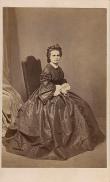Born: Established: 1827 London,
c
England,c
c
United Kingdom (UK),c
Western Europe,
Europe,
;
Died:
Ceased:
1918
Point Lonsdale,
Queenscliff area (Bellarine Peninsula),
Geelong - Terang - Lake Bolac area,
Victoria,
Gender:
Female
Arrived in Australia:
1852

